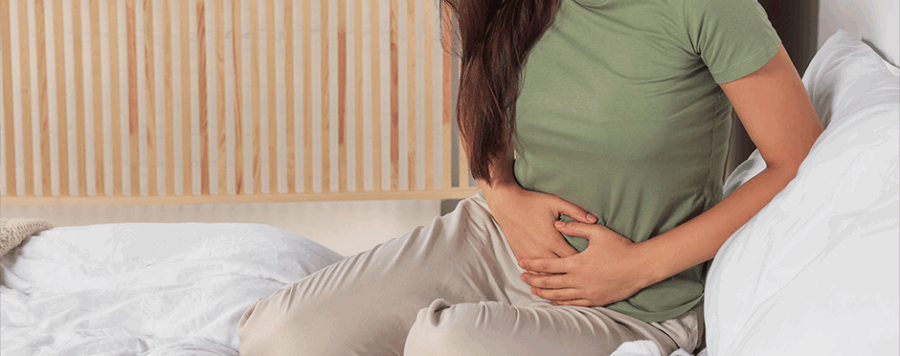Regardless of gender identity or assigned sex at birth, we all have the same pelvic floor muscles. These muscles are hard workers. They function in concert with the core and hip muscles to stabilize the body and help control urinary, bowel, and sexual function. Our breathing, diet, exercise routine, daily chores, and stress level can all affect our pelvic floor muscles.
How can you keep your hardworking pelvic floor muscles healthy? Here are a few tips from an Athletico pelvic health PT specialist.
1. Are you drinking the right amount of water?
If you experience urinary or bowel issues, consider how much fluid you drink—and what kind. Drinking too much or too little water or substituting water with sugary, carbonated, acidic, or caffeinated drinks can irritate the bladder, increasing urinary urgency 1. And as the weather warms up this summer, remember to drink more water if you engage in prolonged vigorous exercise.
2. Do you use the bathroom more often than necessary?
Urinating more frequently than needed can increase the urge to go. If you use the bathroom frequently out of habit, try waiting a few extra minutes before going. The urge to urinate is oftentimes trainable, and the bladder can usually hold for up to 3 to 5 hours. Gradually increasing the time between bathroom visits can help lengthen the intervals between bathroom breaks 2.
3. Do you “hover” or bear down while urinating or passing stool?
Hovering above the toilet requires your core and pelvic floor muscles to stay tight to maintain your position. Bearing down, or contracting the abdominal muscles, increases abdominal pressure, which forces your pelvic floor muscles to contract. These habits can strain the pelvic floor muscles. Instead, sit down and take deep breaths to allow the pelvic floor to relax 3.
If you have difficulty passing stool, try placing your feet on a stool to facilitate the relaxation of your pelvic floor muscles. If constipation is an issue and you need to push, consider increasing fiber in your diet—95% of Americans don’t get enough 4.
4. Do you need to take a deep breath?
You may already know that deep breathing helps relax the neck, shoulders, and core. It also benefits the pelvic floor. When you inhale, your lungs fill with air, the diaphragm drops and your organs shift downward, allowing the pelvic floor to relax 5. When you exhale, the pelvic floor contracts slightly. This natural cycle helps maintain healthy pelvic floor function.
After trauma or surgery, or if the pelvic floor muscles are simply too tight, too weak, or uncoordinated, several problems can occur: incontinence, constipation, urgency, pelvic pain, and sexual dysfunction6. If you have these symptoms, you’re not alone and you don’t have to tolerate them, regardless of age or gender. A urologist or gynecologist can help determine if pelvic floor physical therapy is right for you. At Athletico, trained pelvic floor specialist PTs work with patients of all genders, using inclusive language and personalized care. You will be comfortable and respected. While pelvic floor muscles are similar across genders, your Athletico PT recognizes each patient as an individual and will tailor a treatment plan to support your pelvic health.
*Per federal guidelines, beneficiaries of plans such as Medicare, Medicaid, Tricare, VHA and other federally funded plans are not eligible for free assessments.
The Athletico blog is an educational resource written by Athletico employees. Athletico bloggers are licensed professionals who abide by the code of ethics outlined by their respective professional associations. The content published in blog posts represents the opinion of the individual author based on their expertise and experience. The content provided in this blog is for informational purposes only, does not constitute medical advice and should not be relied on for making personal health decisions.
References:
1. Miller JM, Schimpf MO, Hawthorne K, Hortsch SB, Garcia C, Smith AR. Fluids affecting bladder urgency and lower urinary symptoms: results from a randomized controlled trial. Int Urogynecol J. 2022;33(5):1329-1345. doi:10.1007/s00192-022-05090-z
2. Glenn J. Restorative Nursing Bladder Training program: recommending a strategy. Rehabil Nurs. 2003;28(1):15-22. doi:10.1002/j.2048-7940.2003.tb01716.x
3. Sapsford RR, Clarke B, Hodges PW. The effect of abdominal and pelvic floor muscle activation patterns on urethral pressure. World J Urol. 2013;31(3):639-644. doi:10.1007/s00345-012-0995-x
4. Quagliani D, Felt-Gunderson P. Closing America’s fiber intake gap: Communication strategies from a Food and Fiber Summit: Communication strategies from a Food and Fiber Summit. Am J Lifestyle Med. 2017;11(1):80-85. doi:10.1177/1559827615588079
5. Cowley D, Stafford RE, Worman RS, Hodges PW. Pelvic floor muscle length changes with breathing in males: A preliminary report. Respir Physiol Neurobiol. 2023;316(104117):104117. doi:10.1016/j.resp.2023.104117
6. Faubion SS, Shuster LT, Bharucha AE. Recognition and management of nonrelaxing pelvic floor dysfunction. Mayo Clin Proc. 2012;87(2):187-193. doi:10.1016/j.mayocp.2011.09.004

 width="900"
height="356"
>
width="900"
height="356"
>
